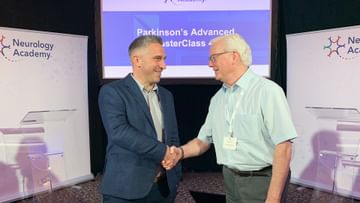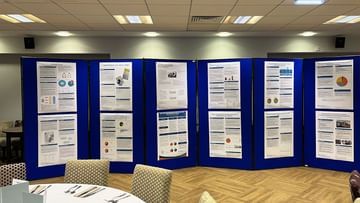The Study Life Cycle: From research idea to successful study closure… and everything in between: case study UDCA
KnowledgeFor a number of years we have received feedback at the Parkinson’s Academy about including sessions about research. Taking these responses and working with The Cure Parkinson’s Trust(CPT) and NIHR leads Dr Camille Carroll, Professor Oliver Bandmann and the Academy’s Dr Peter Fletcher, we designed the Research Engagement meeting for professionals who are becoming or aspire to become involved with Parkinson’s research on many different levels. Each week we are posting a blog to look at the meeting’s speaker sessions in more detail.
Professor Bandmann has been working for the last 10 years to identify potential drugs that might target mitochondrial dysfunction in Parkinson’s. Given that animal models in Parkinson’s are imperfect, the team in Sheffield tested 2,000 drugs in genetically stratified patient tissue – tissue from people living with Parkinson’s (PwP) with parkin gene mutation. They tested for mechanisms leading to cell death and screened drugs that affect mitochondrial function. They found UDCA, a safe drug that had been used to treat liver disease for 30 years and more latterly had been used in people with Motor Neuron Disease (MND). The MND trial was very helpful as it not only provided evidence of long term drug use, but also the trial collected serum and CSF and confirmed that the drug crossed the blood brain barrier. The Sheffield team then tested UDCA in a second genetic model, LRRK2 because mitochondrial dysfunction is a feature and appears early in LRRK2 mutation carriers.
All this energetic and productive pre-clinical work did not automatically result in UDCA being able to move forward and Professor Bandmann eloquently explained how programmes can stall with a lack of funding. For the next 5 years he applied for funding from a variety of major research funders, but as there is no commercial interest in such an old drug, it proved a real challenge. Other issues included bias against phenotypic screening and diseases without biomarkers, and CTU costs, given that Parkinson’s neuroprotective trials need to include many patients and need to run for a long time.
Oliver used the time wisely to carry out further preclinical work, to evaluate dose, and to identify ways of proving target engagement – an important difference from CNS penetrance. The trial that is just getting underway in Sheffield and London of UDCA will use Phosphorous MR Spectroscopy to measure ATP which is a key readout and compare the clinical findings with animal models and skin fibroblasts. To support the clinical data, the team will also use a novel sensor system.
In 2015 CPT developed a dossier on UDCA which was highly prioritized by the Committee and gave support to Professor Bandmann in his work.
Finally in 2018 Professor Bandmann secured funding from the JP Moulton Foundation and CPT – and then the paperwork really began: protocol development, IRAs, ethics submissions and manuals for pharmacy, labs, imaging, sensors; none of which would have been possible without the support of the study team.
Listen to this presentation:
Related articles
'The things you can't get from the books'
Parkinson's Academy, our original and longest running Academy, houses 22 years of inspirational projects, resources, and evidence for improving outcomes for people with Parkinson's. Led by co-founder and educational director Dr Peter Fletcher, the Academy has a truly collegiate feel and prides itself on delivering 'the things you can't get from books' - a practical learning model which inspires all Neurology Academy courses.


